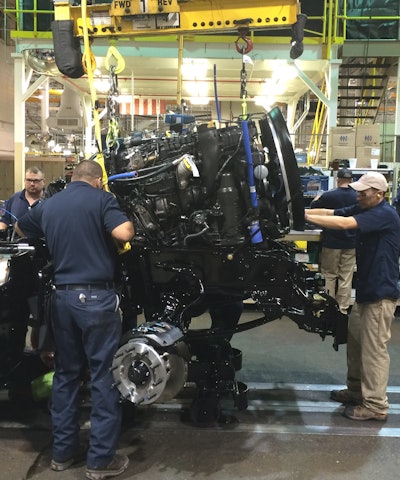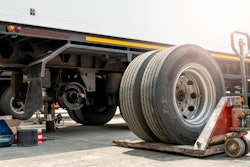
Truck orders last month slid nearly 30%, reaching just 28,100 units, according to preliminary data released Monday by FTR.
September 2021 orders were down 12% versus last year.
Don Ake, vice president of commercial vehicles for FTR, noted that the dip in orders come as OEMs are managing early 2022 production slots in a variety of ways. Some manufactures continue to enter orders but in a measured fashion – filling openings as they become available. Other OEMs are rolling unmet 2021 orders into next year and delaying new 2022 bookings.
Supply chain disruptions are now expected to persist well into 2022, and OEMs are having problems determining how many trucks they will be able to build in the first quarter of next year. For example, Paccar reported Monday that it expects its truck deliveries in the third quarter of 2021 to drop by approximately 7,000 vehicles versus the same period last year, and forecast 33,000 units to be delivered. Paccar said it anticipates that the semiconductor shortage and associated production inefficiencies will continue into the fourth quarter, but it expects global truck production to strengthen when the supply disruptions are resolved.
"This is a complicated, bizarre situation that OEMs have never before encountered. There are many orders that were expected to be built in 2021 that cannot be completed due to the severe component shortages, most notedly, semiconductors," Ake said. "The OEMs are unsure when they can build the leftover 2021 orders and any new orders because the parts shortages are now expected to continue well into next year. They can’t schedule production because they don’t know their actual build capacity."
Even with supply challenges, Class 8 orders still total an impressive 453,000 units for the previous 12 months, but Ake said the order number is not a true indicator of 2022 truck demand.
"There is significant pent-up demand for trucks leftover from 2021 because OEMs were limited in their output. Add to this the robust demand expected for 2022 due to sturdy freight growth," he said. "The fleets have a tremendous need for new trucks in 2022, however, the OEMs are delaying entering orders until the supply-chain situation is clearer. Unfortunately, the supply chain remains a huge mess. Parts and components are so constricted, as well as raw materials, it will take many months to rectify, and conditions are expected to improve gradually, over an extended period.”
ACT Research President and Senior Analyst Kenny Vieth noted that September traditionally marks the transition from the annual summer order trough into fall peak order activity. However, with demand indicators from freight activity to freight rates and carrier profits in blatant contrast to equipment shortages and capacity constraints across all transportation modes, "it is understandable that September’s Classes 5-8 order volume could be construed as disappointing relative to the economic set-up... And, while the story is just starting to develop, recent reports of energy sector issues in China dampen hope for the current supply situation to surprise on the high-side in terms of recovery timing.”











